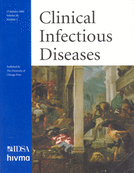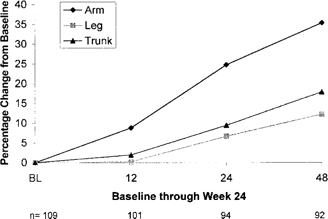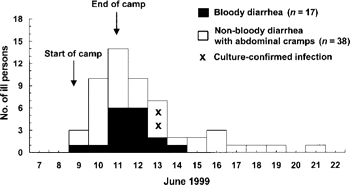-
PDF
- Split View
-
Views
-
Cite
Cite
15 January, Clinical Infectious Diseases, Volume 38, Issue 2, 15 January 2004, Page i, https://doi.org/10.1086/381037
Close - Share Icon Share
Polymerase chain reaction test for severe acute respiratory syndrome (SARS) (JIANG ET AL., PP. 293–6). Investigators from Taiwan report development of a real-time nested PCR method for detection of the SARS virus. Compared with conventional real-time PCR, the technique is at least as sensitive but is less time-consuming.
Laboratory diagnosis of SARS (POON ET AL., PP. 297–9). An editorial commentary accompanying the article by Jiang et al. (above) provides an excellent review of the current state of diagnostic tests for SARS.
Switch from stavudine benefits lipoatrophy (MCCOMSEY ET AL., PP. 263–70). The TARHEEL trial, a 48-week, open-label study, assessed the effects of switching from stavudine to either abacavir or zidovudine on lipoatrophy in a cohort of patients receiving antiretroviral therapy. The change in treatment was associated with median increases of 12%–35% in arm, leg, and trunk fat (see figure below), with maintenance of viral suppression.
Urinary antigen assay for pneumococcal pneumonia (ROSON ET AL., PP. 222–6). A rapid urinary antigen test that was compared with sputum Gram staining showed only modest sensitivity (65%) but high specificity (∼100%) for diagnosis of pneumococcal pneumonia. Sensitivity was much higher for patients with bacteremic infection (92%).
Outbreak of shiga toxin—producing Escherichia coli 0111:H8 infection (BROOKS ET AL., PP. 190–8). When testing for shiga toxin—producing E. coli (STEC), most laboratories test only for E. coli 0157. An outbreak at a camp in Texas involved 55 patients, 2 of whom had hemolytic uremic syndrome (see figure below). The culprit appeared to be a strain of E. coli 0111:H8, which would not have been identified by many laboratories using routine methods. The authors suggest that clinical laboratories should screen suspect specimens for presence of non-0157 strains of STEC.
Risk factors for extrapulmonary tuberculosis (YANG ET AL., PP. 199–205). The proportion of cases of tuberculosis that are extrapulmonary is increasing in the United States. In this retrospective case-control study, the major risk factors were shown to be HIV infection (OR, 4.9); black, non-Hispanic race (OR, 2.4); and female sex (OR, 1.9).
Miltefosine for childhood kala-azar (BHATTACHARYA ET AL., PP. 217–21). Miltefosine has previously been shown to be highly effective for treatment of visceral leishmaniasis in adults in India. This study evaluated use of the drug at the adult dosage for the same infection in Indian children aged 2–11 years. The overall cure rate was 95%. Gastrointestinal side effects occurred in 25% of patients. Miltefosine is considered to be the drug of choice for childhood kala-azar in India.
Figures and Tables
Changes in dual-energy x-ray absorptiometry (DEXA) results after substitution of abacavir or zidovudine for stavudine.
Bar graph illustrating the onset of illness of an outbreak of Escherichia coli O111:H8 infection in 55 camp attendees, Texas, June 1999.







Comments